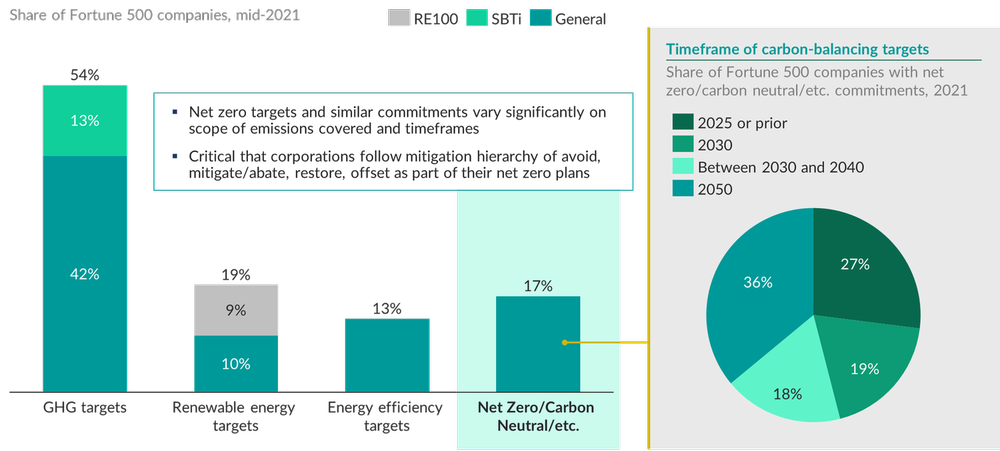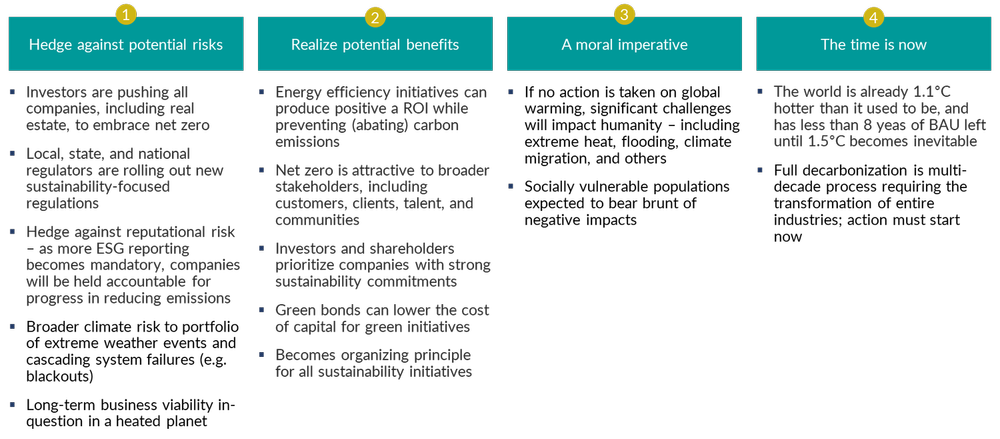Copyright © 2023 Telesto Strategy LLC, All rights reserved.
Governments and Companies Pledge to Achieve Net-zero Emissions
Governments and companies worldwide are pledging to achieve net-zero emissions of greenhouse gases
To stabilize the climate and limit the numerous risks posed by climate change, climate science is directing governments and companies to rapidly reduce and eliminate the addition of greenhouse gases to the atmosphere to net-zero.
In the last few years net-zero has become the guiding principle for action on climate change. In October 2020, the Science-Based Targets Initiative (SBTi) launched the Net Zero Standard that redefines what a credible net-zero target looks like and clarifies the key role of decarbonization in corporate net-zero strategies. Ever since, the number of companies setting emissions targets has exploded.

Not all net-zero strategies are created equal. With the newness of these frameworks and approaches comes an array of terminology, scopes, timelines and resulting efficacy. As shown in the charts below, companies are setting GHG targets, renewable energy targets, energy efficiency targets and also net-zero/carbon neutrality commitments. Each of these is a distinct approach with associated benefits and risks. Given the increasing pressures from investors and regulators, we encourage our partners to pursue the path of greatest coverage and long-term benefit, that of net-zero and carbon neutrality.

Why the movement? Companies are making net-zero commitments to both hedge against potential risks and realize potential benefits
Companies and investors are feeling the pressure and sensing the opportunity from a number of sources. First and foremost, businesses look to minimize risks to their long-term business viability, reducing probability of stranded carbon assets and those of climate shocks.
Furthermore, companies are incented by the opportunity to gain energy efficiencies, lower long-term costs and gain market recognition for something important to customers and the broader public.
Finally, the time is now and leading companies understand the moral imperative to take a stand for future generations and act for the betterment of all global stakeholders.

How to get there? Businesses are setting science-based targets
Science-based targets provide a clearly defined pathway for companies and financial institutions to reduce greenhouse gas (GHG) emissions, helping prevent the worst impacts of climate change and future-proof business growth. Targets are considered ‘science-based’ if they are in line with what the latest climate science deems necessary to meet the goals of the Paris Agreement – limiting global warming to well-below 2°C above pre-industrial levels and pursuing efforts to limit warming to 1.5°C.
Learn more about the SBTi framework here.
What’s included in net-zero targets?
The Greenhouse Gas Protocol categorizes direct and indirect emissions into three broad scopes:
Scope 1: Direct GHG emissions occur from sources that are owned or controlled by the company, for example, emissions from combustion in owned or controlled boilers, furnaces, vehicles, etc.; emissions from chemical production in owned or controlled process equipment.
Scope 2: Indirect greenhouse gas emissions from consumption of purchased electricity, heat or steam.
Scope 3: Other indirect emissions, such as the extraction and production of purchased materials and fuels, transport-related activities in vehicles not owned or controlled by the reporting entity, electricity-related activities (e.g. T&D losses) not covered in Scope 2, outsourced activities, waste disposal, etc.

Science-based targets must cover scopes 1 and 2. For companies whose scope 3 emissions cover more than 40% of their combined scope 1, 2 and 3 emissions, targets must cover scope 3.
What to expect – typical key steps in path to net-zero
Reduce unnecessary waste in core business activities e.g. reduce internal business travel
Procure energy from renewable energy sources e.g. rooftop solar or green energy contracts with local utilities
Improve efficiency of core business activities e.g. optimize fleet routes and reduce idling
Shift from fossil fuels to electricity e.g. replace gas furnaces with electric heat pumps
Invest in R&D to decarbonize industrial processes e.g. cement and concrete production
Embed emissions requirements into contracting and procurement processes
Purchase carbon credits for remaining emissions to bring net emissions to zero
For more information on how to get started on your net-zero journey we welcome the opportunity to hear from you and determine how we could provide support to your important effort: info@telestostrategy.com.
Our latest insights




